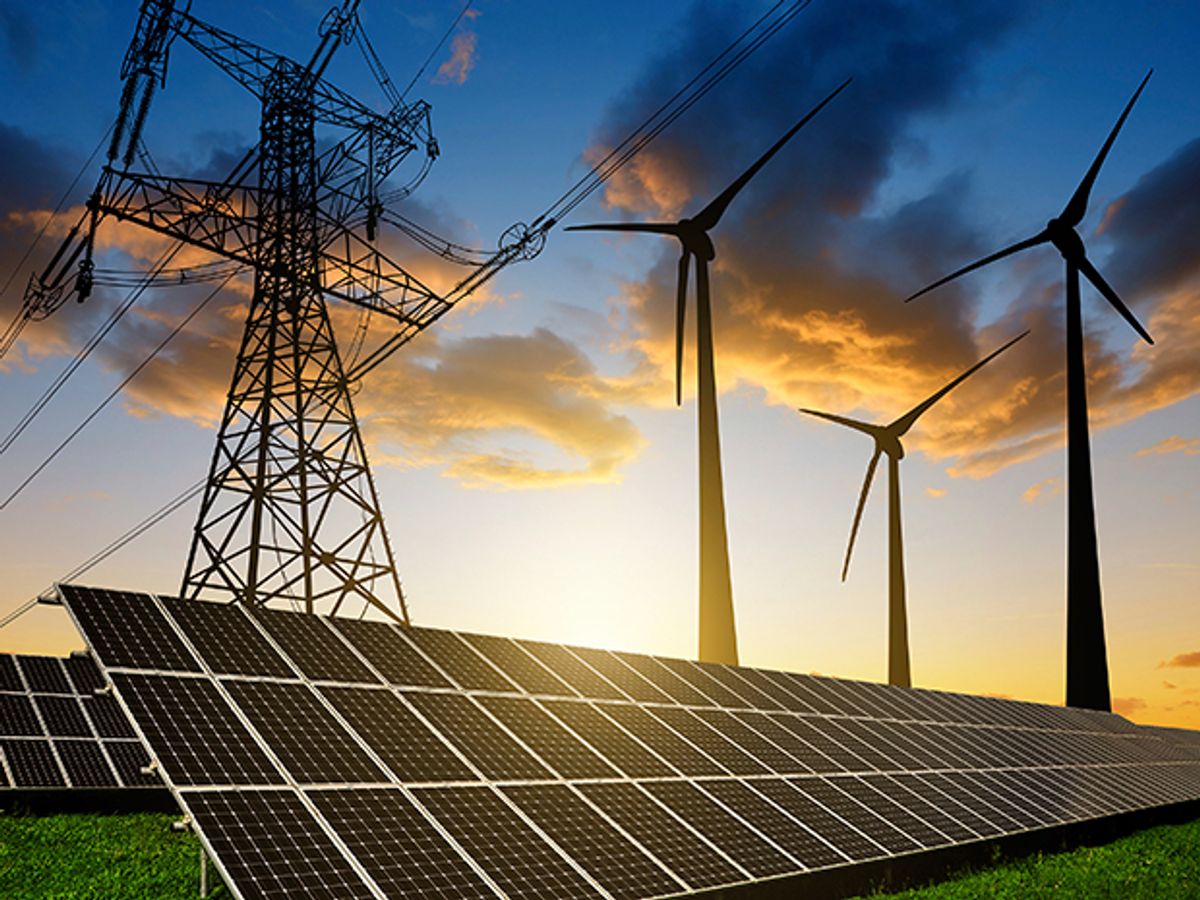The majority of the United States's electricity needs could be met with renewable energy by 2030—without new advances in energy storage or cost increases. That’s the finding of a new study conducted by researchers from the National Oceanic and Atmospheric Administration (NOAA). The key will be having sufficient transmission lines spanning the contiguous U.S., so that energy can be deployed from where it’s generated to the places where its needed.
Reporting their results today in Nature Climate Change, the researchers found that a combination of solar and wind energy, plus high-voltage direct current transmission lines that travel across the country, would reduce the electric sector's carbon dioxide emissions by up to 80 percent compared to 1990 levels.
Conventional thinking around renewable energy has been that it is too variable to be broadly implemented without either fossil fuels to fill in the gaps or a significant ability to store surplus energy, says Sandy MacDonald, co-lead author of the paper and previously the director of NOAA's Earth System Research Laboratory. However, MacDonald thought that previous estimates had not used accurate weather data and so he wanted to design a model based on more precise and higher resolution weather data.
In the study, the team used historical and projected carbon dioxide emission and electricity cost data from the International Energy Agency, which projects that U.S. electricity will cost 11.5 cents per kilowatt hour, on average, in 2030, and that carbon dioxide emissions will be 6 percent above 1990 levels.
They designed a model called National Electricity with Weather System that took into consideration demand across one-hour time increments as well as generation capability. The main constraint of the model was that it had to use existing technologies.
The researchers ran three different scenarios: one that assumed renewables at a low cost and natural gas at a high cost; a second that accounted for a low cost of natural gas and a high cost of renewable energy; and a third that assumed mid-range prices for both.
For all three scenarios, both carbon emissions and price were reduced. The low-cost renewables/high-cost natural gas scenario resulted in the greatest reduction in carbon emissions (78 percent below 1990 levels), and average electricity prices at 10 cents per kilowatt hour. The mid-range model resulted in a 61-percent drop in emissions, and electricity prices at 10.2 cents per kilowatt hour. The high-cost renewables/low-cost natural gas scenario reduced carbon emissions by 33 percent; electricity cost 8.6 cents per kilowatt hour.
MacDonald says that some of the findings were a bit counterintuitive and highlighted the cost benefits of having a national electricity grid. For instance, the model chose to implement very few offshore wind generators, finding that building transmission lines from wind generating plants in North Dakota to New York, was in fact cheaper than building wind off the coast of New York, despite the longer distance it would have to travel. However, “as you start to make the geographical area smaller, it does pick up offshore wind because you're restricting access to some areas,” MacDonald says.
The study also looked at land and water use requirements, finding that water consumption in the electric sector could be reduced by 65 percent. The amount of land that would need to be converted for use by renewables would be 6,570 square kilometers, or about .08 percent of the U.S. Land use has proven to be a contentious issue for energy development, and although the model prohibited renewable energy development on protected lands, urban areas and steep slopes, and restricted natural gas development to sites where a fossil fuel plant existed in 2012, there could still be hurdles.
Christopher Clack, co-lead author of the paper and now a research scientist at the University of Colorado, says that one major difference between the group's model and other recent research evaluating the impacts of renewable energy is the resolution at which they evaluate weather data and the timescale at which they anticipate implementing renewables.
For instance, a recent study published in the Proceedings of the National Academy of Sciences, came to the conclusion that water, wind, and solar could supply the bulk of U.S. energy needs by 2050.
That study focused on more than just the electric sector; plus those researchers designed their model using weather data at a resolution of 250 kilometers. The NOAA team's weather resolution was much higher, at 13 kilometers. “The resolution of the weather data is a key point,” Clack says, given how variable wind can be over even small regions.
Another key difference is that the PNAS study predicts 2050 costs for energy and energy storage, while the NOAA model “optimizes in a similar way that markets operate today,” Clack adds.
“We are agnostic to technology and allow the model to select the cheapest mix. What we find is the cheapest mix, at a national scale, is large amounts of wind and solar, enabled by cost effective transmission,” he says.
And although the model still selects some amount of natural gas, hydro, and nuclear, it is based on technology available today and doesn't make far-out predictions of price, MacDonald adds.
Clack and MacDonald acknowledge that there will be significant hurdles in implementing such a model. Although electricity markets in various states do coordinate with each other now, they don't to the extent that would be required for the model to work.
But, MacDonald likened the model to the U.S. interstate highway system, which was overlaid atop regional, state and local systems. “If you have a national transmission network, it's less expensive and more reliable,” he says.
“In the coming years, different entities will have to work out what their energy mix will be to meet legislation requirements that are in the works,” Clack says. “The idea of this tool is to give options to help policy makers decide what's best.”



